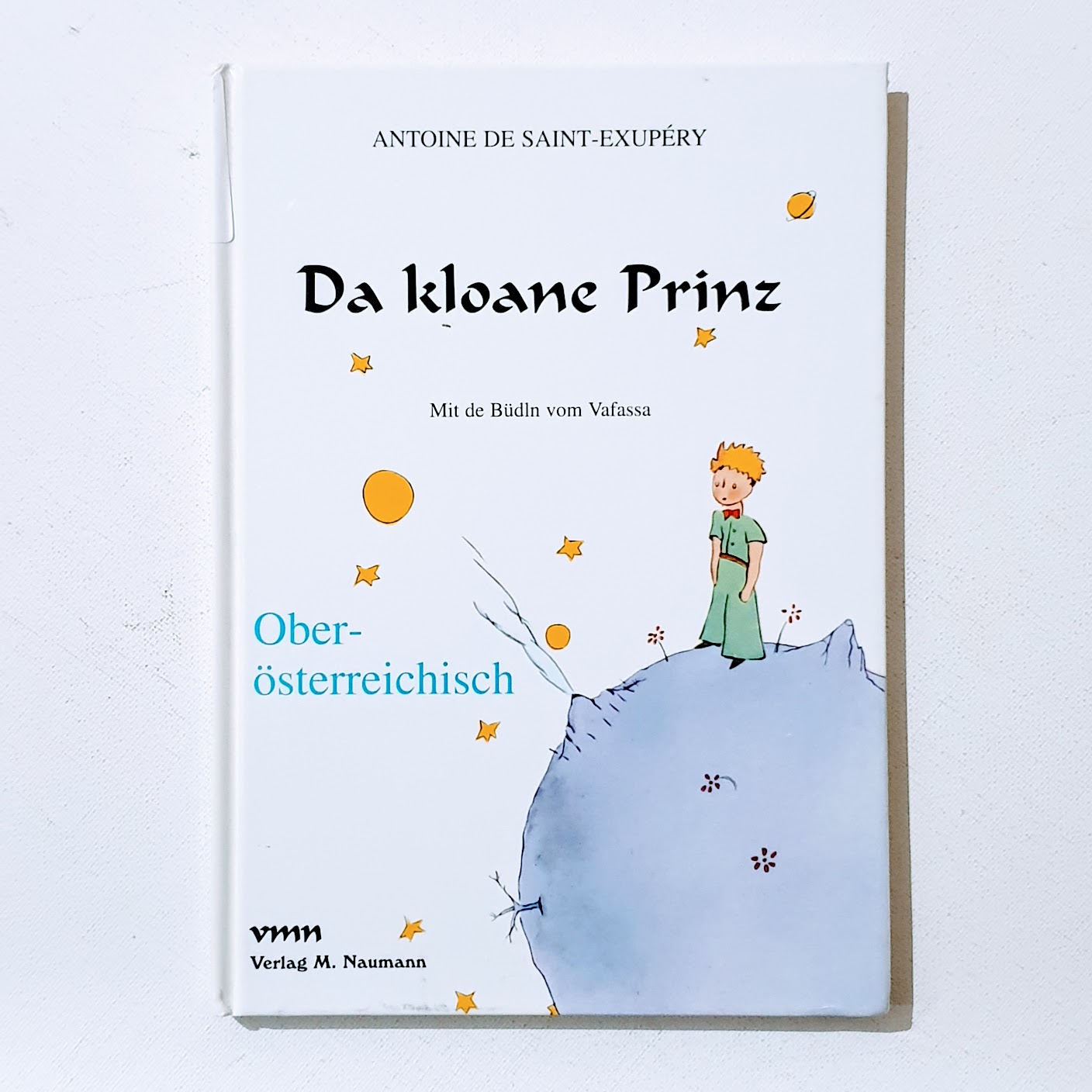
Da Kloane Prinz – in Upper Austrian dialect.
The Upper Austrian German, also known as Oberösterreich dialect, is a group of Upper German dialects spoken in the state of Oberösterreich (Upper Austria). It’s part of the larger Bavarian dialect group, which also includes dialects spoken in Bavaria (Germany), most of Austria, and South Tyrol in Italy. The linguistic diversity within Upper Austrian is significant, with variations in dialect not only from one region to another but sometimes even from one village to the next.
Like other Bavarian dialects, the Upper Austrian dialect features a number of phonetic characteristics that distinguish it from Standard German. This includes the use of diphthongs that may differ from those in High German and unique consonant sounds. The pronunciation of vowels and consonants can significantly vary within the dialect group. The grammatical structure of the dialects can differ substantially from Standard German. This includes the use of different verb conjugations, the formation of plurals, and the use of specific case forms that are not present in Standard German. The dialect includes a rich lexicon of words and expressions unique to the region or shared with other Bavarian dialects. Many of these terms pertain to local customs, agricultural practices, and natural features of the region.


